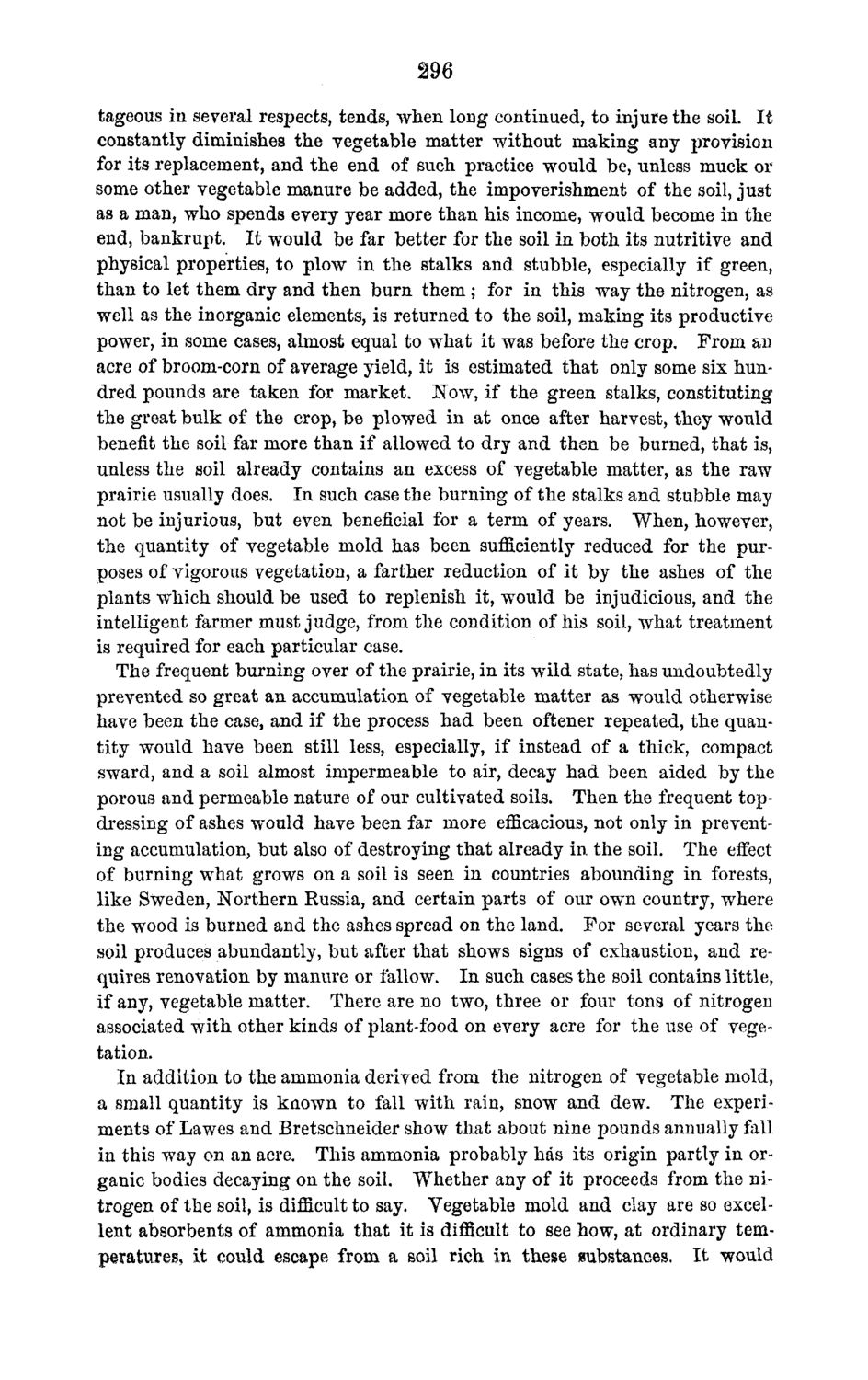| |
| |
Caption: Board of Trustees Minutes - 1870
This is a reduced-resolution page image for fast online browsing.

EXTRACTED TEXT FROM PAGE:
296 tageous in several respects, tends, when long continued, to injure the soil. It constantly diminishes the vegetable matter without making any provision for its replacement, and the end of such practice would be, unless muck or some other vegetable manure be added, the impoverishment of the soil, just as a man, who spends every year more than his income, would become in the end, bankrupt. It would be far better for the soil in both its nutritive and physical properties, to plow in the stalks and stubble, especially if green, than to let them dry and then burn them ; for in this way the nitrogen, as well as the inorganic elements, is returned to the soil, making its productive power, in some cases, almost equal to what it was before the crop. From an acre of broom-corn of average yield, it is estimated that only some six hundred pounds are taken for market. ISTow, if the green stalks, constituting the great bulk of the crop, be plowed in at once after harvest, they would benefit the soil far more than if allowed to dry and then be burned, that is, unless the soil already contains an excess of vegetable matter, as the raw prairie usually does. In such case the burning of the stalks and stubble may not be injurious, but even beneficial for a term of years. When, however, the quantity of vegetable mold has been sufficiently reduced for the purposes of vigorous vegetation, a farther reduction of it by the ashes of the plants which should be used to replenish it, would be injudicious, and the intelligent farmer must judge, from the condition of his soil, what treatment is required for each particular case. The frequent burning over of the prairie, in its wTild state, has undoubtedly prevented so great an accumulation of vegetable matter as would otherwise have been the case, and if the process had been oftener repeated, the quantity would have been still less, especially, if instead of a thick, compact sward, and a soil almost impermeable to air, decay had been aided by the porous and permeable nature of our cultivated soils. Then the frequent topdressing of ashes would have been far more efficacious, not only in preventing accumulation, but also of destroying that already in the soil. The effect of burning what grows on a soil is seen in countries abounding in forests, like Sweden, Northern Russia, and certain parts of our own country, where the wood is burned and the ashes spread on the land. For several years the soil produces abundantly, but after that shows signs of exhaustion, and requires renovation by manure or fallow. In such cases the soil contains little, if any, vegetable matter. There are no two, three or four tons of nitrogen associated with other kinds of plant-food on every acre for the use of vegetation. In addition to the ammonia derived from the nitrogen of vegetable mold, a small quantity is known to fall with rain, snow and dew. The experiments of Lawes and Bretschneider show that about nine pounds annually fall in this way on an acre. This ammonia probably has its origin partly in organic bodies decaying on the soil. Whether any of it proceeds from the nitrogen of the soil, is difficult to say. Vegetable mold and clay are so excellent absorbents of ammonia that it is difficult to see how, at ordinary temperatures, it could escape from a soil rich in these substances. It would
| |